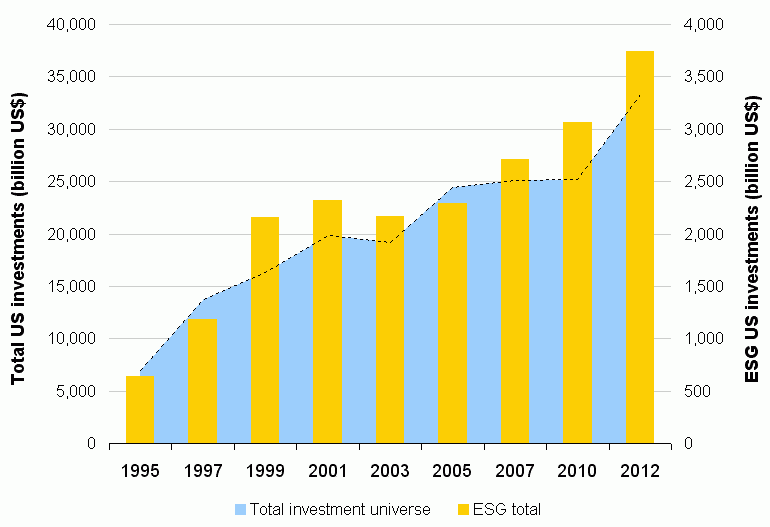Selective Cuttings
Taking stock of environmental, social and governance issues in the forest sector
August 20, 2013
Environmental, social and governance (ESG) refers to firm-level strategies that actively manage their environmental and social impacts as a way to generate value. ESG activities encompass all of a firm’s activities aimed at leveraging opportunities associated with the firm’s environmental, social and structural impacts. A simple example of this is reducing energy consumption (an environmental benefit), which also reduces energy costs (a profit benefit). Another example is that of collaboration or cooperation with local communities, which will not only improve a firm’s brand but also facilitate continued access to resources.
The market demand for ESG is solid and growing: In 2012, sustainable and responsible investments represented 1 in 9 dollars invested in the US (total assets under management tracked by Thomson Reuters Nelson). Since 2007, ESG investment growth has actually been one percentage point faster than total investment growth. Signatories to the Principles for Responsible Investment now count over 1,100 firms—with assets over $30 trillion (or 15% of the total value of global capital markets)—from only 100 in 2006.
U.S. sustainable and responsible investments in perspective
Companies are responding by increasingly including ESG in their business models and reporting: As a response to shareholder engagement with ESG, global corporations increasingly embrace ESG practices and disclosure and incorporate these standards into their operations. This has given rise to a sharpened focus on both “integrated reporting” exemplified by the newly created Sustainability Accounting Standards Board in the US and the recent ISO 26000 standards which provides guidance on how businesses and organizations can operate in a socially responsible way.
The forest industry is part of these developments: FTSE, a leading global index provider, has announced in June 2013 that it is introducing a new sector, ‘Food, Agriculture and Forestry’, to its Environmental Markets indices. The move was allegedly spurred by an increasing demand for environmental investments in these sectors. One clear illustration of how ESG has been addressed in the forest is the certification trend. Since 2007, forests certified to the SFI Standard® total chain-of-custody certified locations grew from 500 in 2007 to more than 2,500 in 2012 while FSC chain-of-custody certificates grew from just over 5000 to 25000. Another illustration of ESG in the forest sector is the move by some companies (e.g., Domtar, Sodra, Metso or Weyerhaeuser) to set sustainable business roadmap and then track and report performance on a wide range of indicators that cover the range of the company's sustainability efforts, from increasing production efficiency and environmental footprint reductions, to promoting the development of employees, serving customers better and contributing more effectively to host communities. Client demands and improved market access are the major reasons for certification with paper and packaging the main focus.
Whether a licence to operate, a means to reduce costs or a business strategy, ESG is increasingly becoming part and parcel of doing business including in the forest sector.

